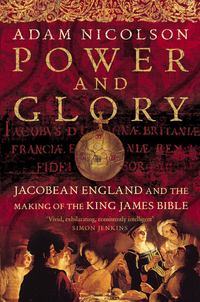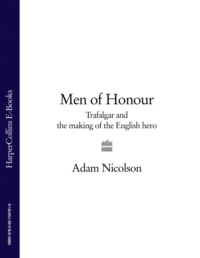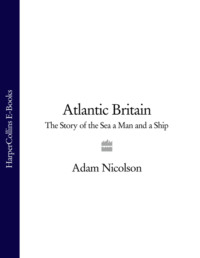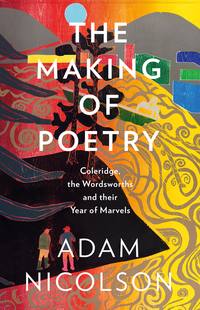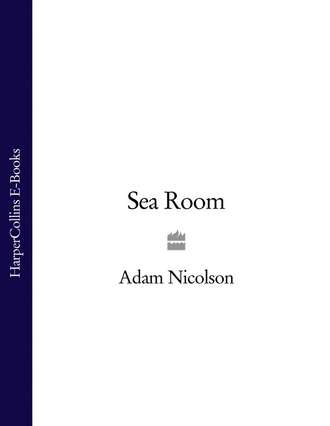
Полная версия
Sea Room
They are as innocent and flighty as deer. The flock moves in its grazing like a shoal, a turn of a few degrees communicated somehow at the same instant throughout the pack. There is an ever-present suggestion of a tremor even in the way they stand and walk. But for all the beauty of that sight, that million-fingered responsiveness, this land-life on the grass seems to be no more than an interruption to their favoured state. They belong in the air. Lift yourself for a moment, so that more than your eyes and hat appear above the geese’s horizon and it is as if you have blown a breath of wind across the flock. The four hundred of them rise and shimmer like a single piece of cloth lifted by the breeze. The edge of the crowd nearest you moves first, and that beautiful supple sheet of the rest of them follows on with the same ripples in their white heads and black necks, the same slow crooner’s elasticity in the muscles, and same ineffable languor, all synchronised as if tied by invisible threads. A human crowd, suddenly made aware of a threat or danger, would shatter, each shard dispersing as if shot. The flock of geese does the opposite, more whole in the air than it had been on the ground, turning on the wind, a single wing, before beating out over the Minch, down over the small, grassless rock at the southern tip of Eilean an Tighe, Sgeir Mianish (‘the rock of the middle headland’ in Gaelic-cum-Norse) before flogging over into the wind to the equally inviting grass on Eilean Mhuire, a mile and a half away to the east, a coughing, guttural chatter as they pass.
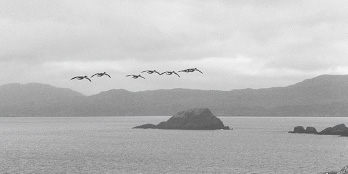
I may be drawn to them but they don’t care for me. They are only here because people like me so rarely are. I have pursued them once but once only. Having disturbed them down on Mianish, I walked the mile back to the beach where the dinghy was tied up, launched it, rowed the mile across the bay to the landing place on Eilean Mhuire, hauled the dinghy up the beach there, climbed the two hundred feet up to the top of that island, walked the half mile down to its eastern tip, the promontory called Seann Chaisteal, the Old Castle, only to see the flock which had been grazing happily there for an hour since I had last disturbed them, lift with that wonder grace, a slow-motion departure, back across the tide-rippled sea to the headland where I had first encountered them.
Sometimes looking up from digging the garden, or sorting out the boat, or collecting firewood from the beach, I will see the flock of Shiant geese strung out against the sky, or wheeling in the gusts that ripple and billow off the back of Garbh Eilean. It is only a question of time before they leave, at some time in April. This is the gateway to summer and I have never witnessed it. All that I have ever noticed is a sudden absence. The paddled turf, the ubiquitous droppings, even the weather, all seem the same, but the geese have gone. It is like a death, or the descent of Proserpina into Hell, a removal of that life-presence which animates a place. The Shiants, then, are like an island from which the inhabitants have been cleared. Nothing has changed except the thing that changes everything.
Not until the nineteenth century did anyone understand this disappearance of the goose and its sudden re-emergence at the end of the year. There was a general belief that the birds hibernated somewhere or other, an idea that went back to Pliny and Aristotle before him. The barnacle goose was thought, but only by the credulous, to retreat into and later emerge from the goose barnacle, a crustacean which attaches itself like a mollusc to the rocks and has a shell which resembles the beak of goose. There is no need to be too condescending about this: still no one has any idea, for example, of what happens to the basking shark in winter. They disappear every autumn only to reappear the following spring. Whether they go out into the mid-Atlantic, or swim south to warm waters or hibernate on the sea floor, it remains invisible to us, and unknown.
There is a strange connection between the Shiants and the question of disappearing birds. According to the late-nineteenth-century Roman Catholic priest and folklorist, Father Allan McDonald of Eriskay, ‘the corncraik and stonechat are called eoin shianta on account of their disappearance in winter. The opinion is that they are dormant all winter, and that they should be so and not die makes people consider them eerie or uncanny or sianta.’
Certainly, that word runs true to the experience of a bird that departs without warning. The emptiness it leaves is haunted by the retinal image of its presence. You feel for a few days that the geese must still be there and that you are simply failing to see them. It is then that the Shiants come to feel like eerie islands.
The Gaelic word probably lies behind the Shiants. ‘Si’ in Gaelic is pronounced ‘sh’ and ‘sianta’ transliterates as ‘shanta’. The ‘i’ in the modern spelling of the word, which is a phonetic transcription of the Gaelic, is a mistake. Either ‘Siant’ or ‘Shant’, not ‘Shiant’, is the way it should be spelled and pronounced. Only those reading from maps ever say ‘Sheeant’. The Old Irish word sén, meaning ‘a blessing’ or ‘a charm’, derives eventually from the Latin signum, meaning a sign of any sort, especially the sign of the cross. From that comes the verb sénaim: ‘to bless’, ‘to make holy’. Its passive participle in Old Irish is sénta, a word which evolved in modern Irish Gaelic into séanta, meaning ‘consecrated’, ‘hallowed’ or ‘charmed’, with a haze of meanings hovering around its outer edges meaning ‘haunted’, ‘spooky’, ‘otherworldly’. This is the word which is often spelled in Scottish Gaelic sianta.
Examples of the name are scattered across Gaelic Scotland. There are sacred mountains in Jura, near Callander and in Ardnamurchan, all called Beinn Sheunta. There is a Loch Seunta, ‘Holy Loch’, in Cowal, and a cave, an Uaimh Shianta, ‘the hallowed’ or ‘the sacred’, in Applecross. There is a Shian Wood north of Oban and a stone circle at Shian Bank in Perthshire. In Skye, Martin Martin described a Loch Siant in the seventeenth century, of which the water was thought to cure diseases. There is a brackish Loch Shient in North Rona, although the derivation of that may be different, describing the sea spray with which the pool is filled. Most curiously of all, there is a record, in one of the Irish Chronicles for the second half of the fifth century, of the Isle of Man having its name changed ‘from Inis Falga to “Ellan Shiant”, that is “The Holy Isle”’.
The Shiant Islands, full of magnificence and strangeness, protected by the Stream of the Blue Men, standing out in the Minch tall, mysterious and beautiful, a challenge and an invitation to any man with a boat and a modicum of courage along hundreds of miles of coastline from Sutherland to Skye and from Ness to Barra, said, as so many of these islands are, to have been the hermitage of a Celtic saint in the Dark Ages: these are the Holy Islands of the Minch.
Most of the names of places on the Shiants are Gaelic and not particularly rich in association or significance. They describe parts of the islands in the way a Crusoe would, by looking at them, by saying what they are, rather than by associating them with anything that might have happened there in the distant past. So there is a Big Beach, a Beach with Boulders, a Washing Place, a Cormorant Head, some Rocks of the Bay, a Seal Point, the Kittiwake Rocks, the Hole of the Seals – the natural arch at the north-east corner of Garbh Eilean – and the Point of the Fank (the gathering place for sheep on Eilean Mhuire). Most of these still have the attributes by which they are named. Sheep are still gathered on Eilean Mhuire at the Bid na Faing. The seals do indeed lounge and wail on the point that is named after them. There is a kittiwake colony not far from their rocks, and there are shags (the Gaelic word sgarbh does not distinguish between a cormorant and a shag) forever standing with their arms outstretched, drying their feathers on the point named after them.
Almost certainly, most of these names are quite recent and do not embody a long tradition. They may well have been given by the shepherds who came here seasonally in the early nineteenth century, after the old Shiant population had left. The Ordnance Survey officers, when recording these names in the 1850s, used as their authority a Neil Nicolson or Nicholson (he couldn’t spell) from the village of Stemreway in Lewis. He may not have known the place very well. The surveyors could speak no Gaelic, and so in this way, here as elsewhere in the Gaelic world, much of the information that might have been gathered was lost. The Shiants must once have had a rich suite of names in which the lives of its inhabitants were folded into the landscape and recorded there, but they will never be recovered. A Harris woman, Christina Shaw, when interviewed a few years ago by the ethnographer Morag MacLeod, told her: ‘There wasn’t the length of between here and the gate that we didn’t have a name for, which is not the case nowadays. Every ben and every mound and every hill … I could name them all.’ All of that has been lost from the Shiants.
Here and there, something older can be traced. The islands are set in a Viking sea. Every prominent headland and inlet around them, every stretch of water, and village after village, township after township on Lewis, were named by the Norse. There are three identifiably Norse place names on the Shiants themselves: Stocanish on Garbh Eilean (‘the Headland near the Sea Stacks’), the mile-long line of the Galtas offshore (perhaps ‘the Sea Gables’) and Mianish on Eilean an Tighe, meaning either ‘the Narrow Headland’ (which it is) or, more intriguingly, ‘the Middle Headland’, which it also is when approaching the islands by sea from the south. A Dublin Viking, making his way back north, would see Mianish stretching out towards him in the haze, the Middle Head, around which the flood tide rips. All three of these Norse places on the Shiants are precisely those which any sailor would need to mark and remember. Other than that, apart from one glowing exception which I shall come to in later chapters, the place-names of the Shiants record not memories but forgetfulness, the washing away of human lives, the fragility and tissue-thin vulnerability of human culture to the erosion of time.
When I realised that the geese had finally gone, I went to stand on the heights of Garbh Eilean, nearly six hundred feet above the Minch at its most languorous and seductive. The sky was draped with the weightless trails of evening clouds. They were the colours of the prayer flags which Buddhists leave on mountain passes and their brightness had been bleached by wind and sun. Below them, in the stillness of the evening, every inch of the horizon was rimmed with distant sunlit mountains. My eye travelled them like a fell runner. Even to name the hills is a roll-call of ancestors, the Shiants’ own king list. In Sutherland, eighty miles away to the north-east, Foinaven and Ben Stack. Going south, Quinag above Assynt, Suilven and Stac Polly. Above Loch Broom, Coigach matches the ragged notches of An Teallach on its southern side. Behind Gairloch is Beinn Eighe in Torridon, south of that, Beinn Bhan behind Applecross. Each mountain in what Martin Martin called ‘the opposite Continent’, is the bass note to the human settlement at its feet. The eye swings around to Rona, Raasay and northern Skye, each wrinkle in the rock picked out by the last of the light. In the distance, with only their upper reaches appearing over the foreground, are the Cuillins and the strange flat summits of Macleod’s Tables above Dunvegan. On the clearest days, Heaval, the mountain on Barra, is visible past the headlands of Waternish and Dunvegan. Hecla and Beinn Mhor follow in South Uist; a gap and then the shark fin of Eaval, the unmistakable signpost for anyone sailing south in the Minch, the islands in the Sound of Harris; then Roineabhal, the hill above Rodel, which for years was under threat of removal by the workings of a superquarry. If the catastrophe should happen and permission were ever granted, five hundred and fifty million tons of it would be dug out over a period of sixty years and this wrinkled horizon would have changed for the first time since the Ice Age. North of it come the mountains of North Harris, the round bull-seal head of The Clisham, the hills of Pairc and Eishken, before the eye swings up to the north-west, to the low mound of Muirneag, north of Stornoway, and the long flat headlands of Lewis beside it. Only then is there a gap in the list, an opening in the ring, and there you look out to the North Atlantic. Nothing till Spitsbergen.
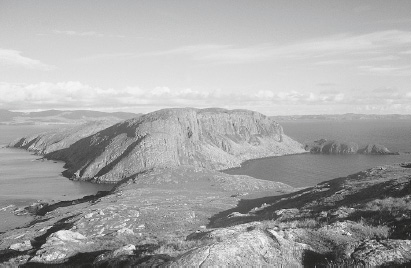
Compton Mackenzie said when he stood here that he felt ‘swung between heaven and earth’. No place I know feels more like the centre of the universe
.
5
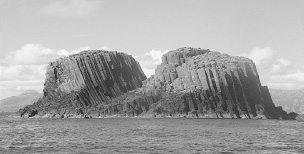
SOMETIMES, EARLY IN THE SPRING, around the middle of April, before any true signs of summer arrive, when the grass on the islands is still dull and tawny from the rigours of winter, when the sheep are poor and thin and an air of exhaustion hangs over the place, a break can come in the weather which seems like a gift from Heaven. Stillness is wrapped around the Shiants for a day or two and the sun bathes their cold, bruised limbs. Once, ten or twelve years ago, I was there on my own when one of these openings came. I watched it in the sky, arriving from the south. The clouds folded back towards me, like the ravelling up of a screen, leaving behind them a sky as pale as an eighteenth-century ceiling, in which the colour went from blue to pale blue, and at the horizon scarcely blue at all.
I could feel the islands sighing in the light, their pores expanding, the vegetable life reaching out from its winter retreat. It seemed to me then – it is the only time I have ever witnessed it – that as the days went on, opening each morning to another new brightness, I could see the Shiants beginning to move towards their summer condition, like the pelt of an animal as it regains its health, the big flanks of Garbh Eilean greening between the ribs of rock, the tight winter-bitten surface of Eilean Mhuire softening under the millions of grass tips and sorrel shoots prodding up into the light, the body of Eilean an Tighe turning towards the vivid luxuriance of its summer life.
I only had a small dinghy with me then and the calm meant I could take it around to the north side of Garbh Eilean. For weeks at a time when the weather is bad you can’t visit that northern face, because in any kind of sea it is terrifying, thrashed at by the Minch and merciless in the way it would deal with any boat. When the calm descends, that is the place, more than any other, to which I am drawn. It is where you can sense the Shiants’ power, a place of turbulence only ever encountered in tranquillity.
I rowed the boat around, slipped easily through the natural arch at the corner of Garbh Eilean, where, every time you pass, a black guillemot drops out of the cracks in the ceiling on to the sea and then panics and flusters away to the north. The boat slides out across the liquid glass of the Minch. The seals asleep on the skerries wake, stare, shuffle seawards and plunge horrified into the water. The boat rounds the corner of those rocks and then the Shiants reveal their heroic heart. A curtain of columns half a mile long, five hundred feet high and each column up to eight or nine feet wide, drops into the Minch. The black lichen of the splash zone coats them to a height of a hundred feet or more. They bend slowly as they rise from the sea, a wonderful subtle elasticity in the mass. On calm days you can take a dinghy right up to the cliff foot, the boat just nosing and brushing at the giant forms. Afloat on the ink of the green sea, it is like being in the elephant house at the zoo, intimate with hugeness, pushed up next to a herd of still, alien, unembraceable bodies.
This was how William Daniell, the early nineteenth-century topographer of the British shore, portrayed the Shiants in his pair of 1819 aquatints: a vastness of form, a solidity and scale of presence, a tranquil sea passive at their feet.
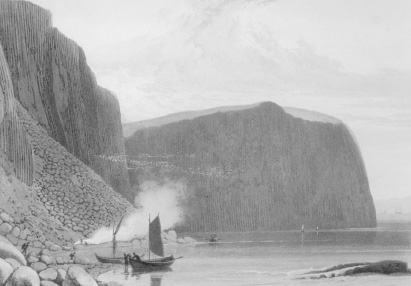
I had this picture on the wall of my room at school and it remains a consoling image for me. Daniell does not attempt any heroics, any wild dynamism in the picture. He portrays the islands as a place of quiet, with a glow in the light and the huge, brooding stability of the cliffs behind them.
It never lasts. The Atlantic drives its next weather system on towards the islands and that sullen, lit beauty is taken up and twisted into a new and familiar frenzy. The Shiants’ temper is like a child’s: unbidden, unexplained rage; sudden quiet; a new paroxysm as total as the one before. Awake at night in the house, I lie listening to the weather. I see the Shiants as if from above, laid out beneath the storm. The cloud shadows beat across them. The swells cram themselves, one after another, through the natural arch, filling it, forty feet high and thirty wide, a tube of white water a hundred yards long, squeezed in there, until they burst out on the far side, released into huge, disintegrating flowerheads of surf. The cliffs and the islands are unmoved. Besieged by the Minch, they remain there, black, impassive and irreducible.
It is tempting to see the Shiants in that way. Perhaps any island owner would like to think of his property as a hedge against erosion but it couldn’t be more wrong. I once spent a few days on the Shiants with a pair of geologists and under their steady rational analysis all idea of the island fortress was soon whittled away. It was a highly enjoyable experience. Fergus Gibb, the Reader in Igneous Petrology at Sheffield University, and his friend Mike Henderson, now Research Professor of Petrology at Manchester University, both know more about the Shiant rocks than anyone on earth. They have been studying the islands since the 1960s and in a small dinghy they guided me around the cliffs and shore, pointing out to me where the story of the Shiants was to be found.
It was a charming, affectionate and mutually impatient double act. Fergus – Mike calls him Fergie – is the more bullish and macho of the two. He plays tennis for the Yorkshire Veterans, talks with fervour about ‘stonking great sledge-hammers’, likes to give things ‘welly’, wears dark glasses and short-sleeved tartan shirts, and looks after Mike, whose balance on the rocks is uncertain. Fergus’s big seamen’s stockings are always pulled up over his trousers to his knees. He takes charge and one falls into line. Mike – knitted wool tie, glasses, green V-neck, baseball cap well down on the brow – plays the complementary role. He and his wife Joan are keen on organic food, a certain kind of witty late nineteenth-century novel and the finer of the performing arts. Mike must be the only geologist in the world who has had a ballet dedicated to him and the first thing he asked me, as I sat him down to a supper of roast lamb in the house on the Shiants, was what I thought of Giselle.
Neither talks of immovability or irreducibility. They are engaged with something richer and deeper: the huge, slow dynamism of this extraordinary place. Everything in the geologist’s mind is a symptom of something happening. We layman landscapists may see the thing itself, the immovable rock, the huge columns, the stand of swaying bamboo, the Elizabethan ruff, the clustered organ pipes; they see the process, the mineralisation, the conductive cooling, the developing faults. ‘Don’t think of what it is,’ Fergus said to me. ‘Think of how it came to be.’
The Shiants, or at least most of them, are about fifty-eight and a half million years old. They are formed from a series of hot, intrusive magmas, giant plugs of molten rock rising from deep within the Earth’s mantle, which squeezed between much older fossil-bearing rocks above them. The process is about as dramatic, and as unlocal as it could be. The ‘emplacement’ of the magma was part of an event of planetary scale. About sixty million years ago, a whole zone of the Earth’s crust began to come under immense strain. Whether the weakness in the crust caused the upwelling of hot rock from deep below; or whether the upwelling of the magma, a huge bubble of heat and energy in the mantle, caused the weakness in the crust, is not certain. What is sure is that this was a stretched, tensed time. Heavy convection currents in the mantle, rising in a plume beneath this spot, put the whole of the Hebrides under pressure. A boil covering half a continent wanted to burst. The whole depth of the Earth’s crust was being stretched here, one part being pulled south-west, the other north-east. The result was one of the most cataclysmic episodes in the history of Britain. The precise geography of this is still not quite clear but it is certain that the enormous volcanic outpourings would have been visible from another planet. Signs of the rift system run from Disco and Nunavik on the west coast of Greenland, to Kangertittivaq on the east coast, out to Jan Mayen Island, deep within the Arctic Circle, besieged by drift ice, across tens of thousands of square miles of what is now the North Atlantic, through Iceland, the Faeroes, Rockall and St Kilda, down through the Shiants, all the way through Skye and the Inner Hebrides, to Staffa and the Giant’s Causeway in Antrim, on to Slieve Gullion and the Mountains of Mourne, before ending in the granite of Lundy in the Bristol Channel.
The rift may perhaps have been the first attempt at the opening of an Atlantic Ocean. If so, the Hebrides would have been pulled apart. Floating in Freyja between the islands, I am directly above one of the world’s great might-have-beens. From within the centre of the Shiants, America and Europe would have moved slowly away, eased apart on giant conveyor belts of hot rock in the mantle. The Galtas and Garbh Eilean would now be off the coast of a New England shore made principally of the old and twisted rocks of Lewisian gneiss which form the Outer Hebrides. Eilean Mhuire would be the westernmost island of Europe, looking out not to the screes and green puffin slopes of Garbh Eilean, a mile away, as it now does, but across three thousand miles of grey Atlantic.
It didn’t happen. The rift never opened beyond a slit. The Atlantic opened to the west of Rockall and the Hebrides remained whole. All that is left of this cataclysmic episode now are the roots and the remnants. Nearly sixty million years of erosion has done its work and almost nothing of the surface landscape which this vulcanism produced now survives. The great mountain punctuation points of the volcanic province, Slieve Gullion and Mourne themselves, the hills of Mull and Ardnamurchan, the Cuillins of Rum and Skye, represent only the hardened footings of the enormous volcanoes through which this spasm of the Earth’s intestinal juices were vented on to the surface.
The Scotland into which the lavas poured was tropical and paradisical. America, Britain, and the Europe of which it was a part, would have been unrecognisable then. Lotus lilies, magnolias and several species of proteus, the tender plant which now flourishes in South Africa, were all thriving in the Hebrides. After each eruption there was a pause. Earth and life accumulated on the ragged, fissured surface of the lava before the next eruption destroyed and enclosed it. In Morvern, one can see the upper parts of each flow stained red where the weather had broken down the rock and turned the iron in it rusty. Each of these red layers is buried under the basement of the flow that came after it. On Mull, at Rudha na h-Uamha, John Macculloch, the fiercely opinionated geologist who was one of the first to give an account of the Shiants’ rocks in 1819, discovered the fossil of a tree still standing embedded in a river of lava, twenty feet deep, which had overwhelmed it. You can still see it there today.




